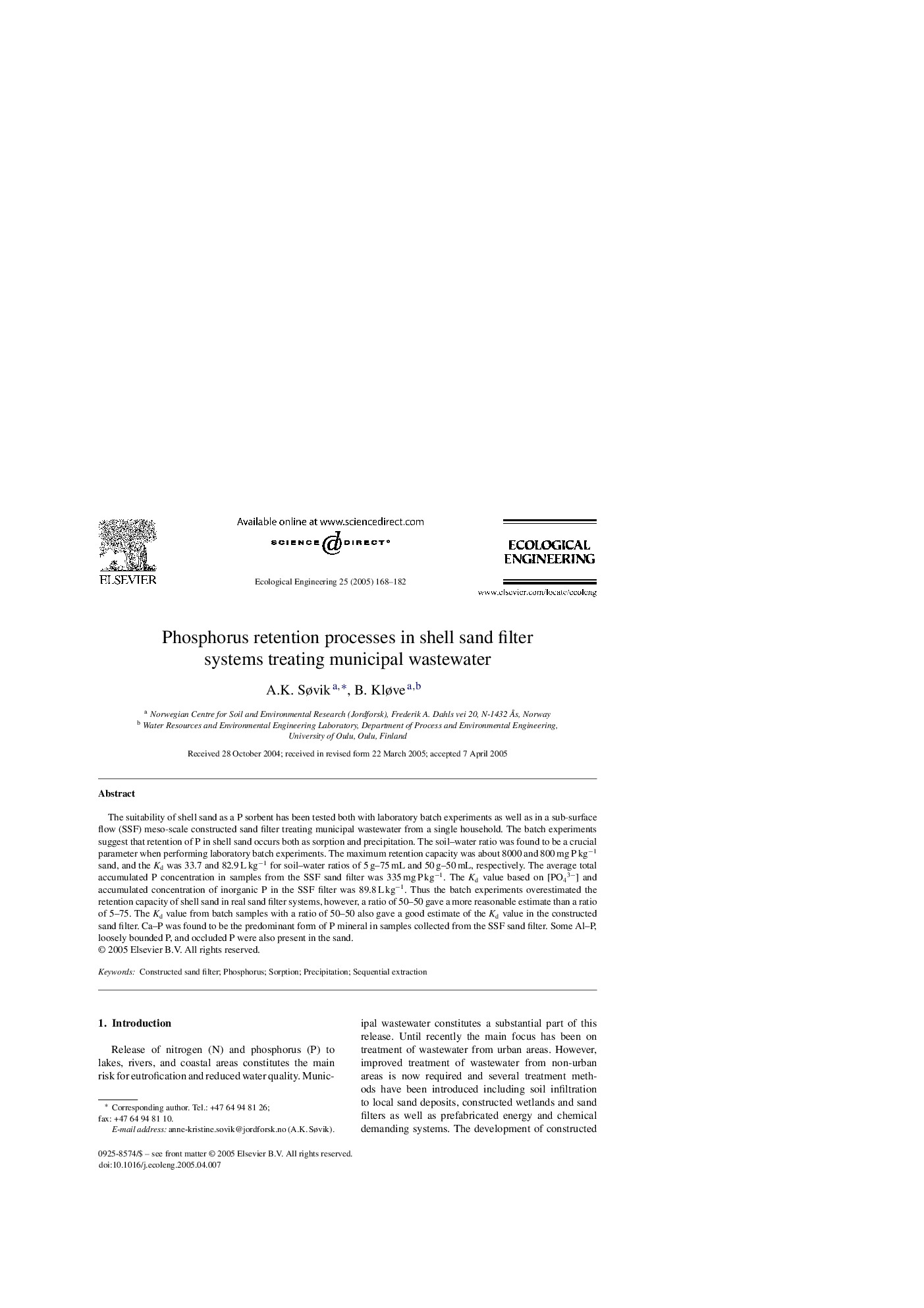| Article ID | Journal | Published Year | Pages | File Type |
|---|---|---|---|---|
| 9447385 | Ecological Engineering | 2005 | 15 Pages |
Abstract
The suitability of shell sand as a P sorbent has been tested both with laboratory batch experiments as well as in a sub-surface flow (SSF) meso-scale constructed sand filter treating municipal wastewater from a single household. The batch experiments suggest that retention of P in shell sand occurs both as sorption and precipitation. The soil-water ratio was found to be a crucial parameter when performing laboratory batch experiments. The maximum retention capacity was about 8000 and 800 mg P kgâ1 sand, and the Kd was 33.7 and 82.9 L kgâ1 for soil-water ratios of 5 g-75 mL and 50 g-50 mL, respectively. The average total accumulated P concentration in samples from the SSF sand filter was 335 mg P kgâ1. The Kd value based on [PO43â] and accumulated concentration of inorganic P in the SSF filter was 89.8 L kgâ1. Thus the batch experiments overestimated the retention capacity of shell sand in real sand filter systems, however, a ratio of 50-50 gave a more reasonable estimate than a ratio of 5-75. The Kd value from batch samples with a ratio of 50-50 also gave a good estimate of the Kd value in the constructed sand filter. Ca-P was found to be the predominant form of P mineral in samples collected from the SSF sand filter. Some Al-P, loosely bounded P, and occluded P were also present in the sand.
Related Topics
Life Sciences
Agricultural and Biological Sciences
Ecology, Evolution, Behavior and Systematics
Authors
A.K. Søvik, B. Kløve,
